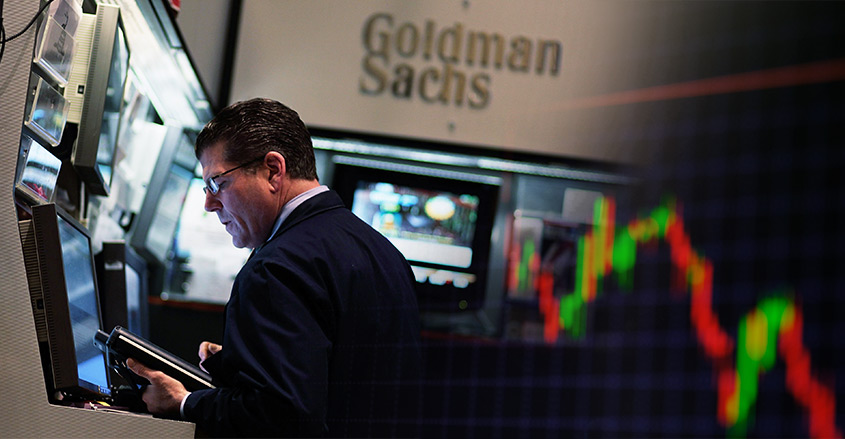Is it time for that long-predicted bear market to finally begin? A Goldman Sachs computer model says yes!
One model created by the Wall Street giant shows a dangerous bear market — more than a blip or correction but outright stock selling sustained for a long period — is right around the corner.
The Goldman model is currently sitting at above a 70 percent chance. If it were a weather forecast, you’d pack an umbrella.
Such a high level is “normally associated with high risks for equity investors,” Goldman’s Peter Oppenheimer wrote in a note this week.
The Goldman model takes in a number of factors, including growth momentum, the slope of the yield curve, core inflation, unemployment and stock valuations.
Despite the flashing red warning, Goldman strategists are telling their investors not to worry.
They argue that the model is showing a high chance mainly because of low unemployment rates and strong economic growth momentum, as opposed to rising interest rates or inflation.
“Low unemployment … and strong growth momentum at such an advanced stage in the economic cycle would normally already be associated with higher wages and, consequently, higher inflation and tighter monetary policy,” they said.
But “it is because of the lack of inflation that some of these variables can appear stretched without ringing alarm bells for equity investors.
“Put another way, it is very unlikely that without core inflation rising much, policy rates will rise sufficiently in the U.S. or elsewhere to invert yield curves and/or force a recession in the near future,” the strategists said.
Translation: People aren’t getting paid enough to worry about inflation, so we don’t expect the Fed to doing anything drastic and maybe tank the market.
Goldilocks economy?
At the moment, the U.S. unemployment rate is at its lowest in almost two decades at 4.1%. That’s far below what most economists would call full employment.
Anybody who truly wants a job has one, basically. Which should mean people getting paid more. But that’s not happening either.
You see the wage problem in the Fed’s measure of inflation, called the core PCE index.
It sits at the central bank’s 2% target. Not too hot, not too cold. A Goldilocks economy, so to speak.
“It is the fear of recession and falling profits that is the normal trigger of ‘cyclical’ bear markets which nearly always have their roots in tighter monetary policy,” wrote several analysts.
The Dow Jones industrial average closed in correction territory last week, down more than 10% from its 52-week high.
A bear market is defined as falling at least 20% from its one-year high.


